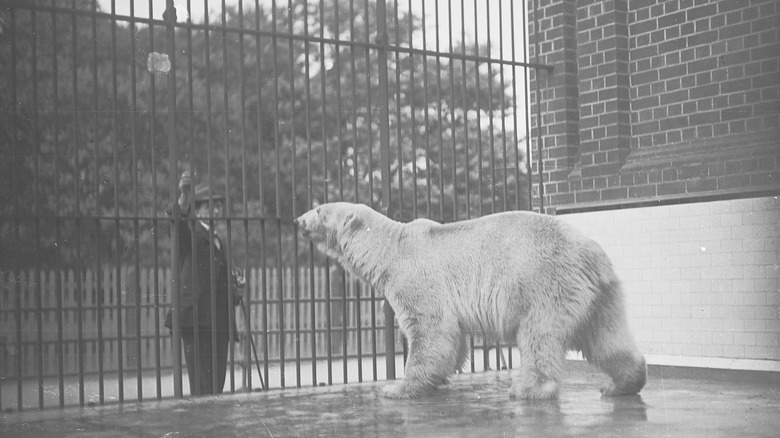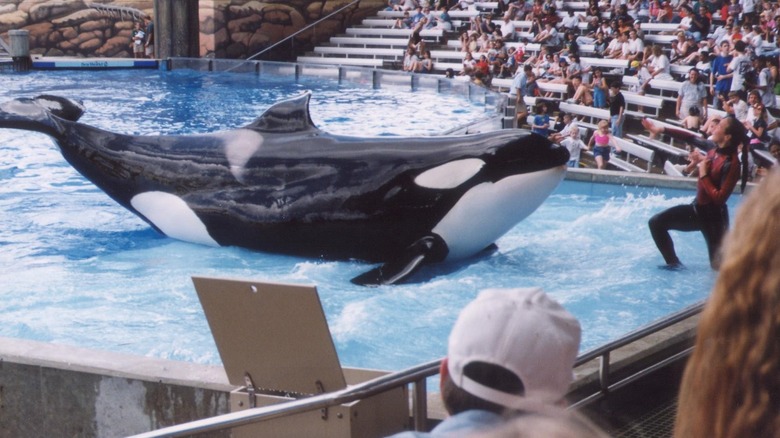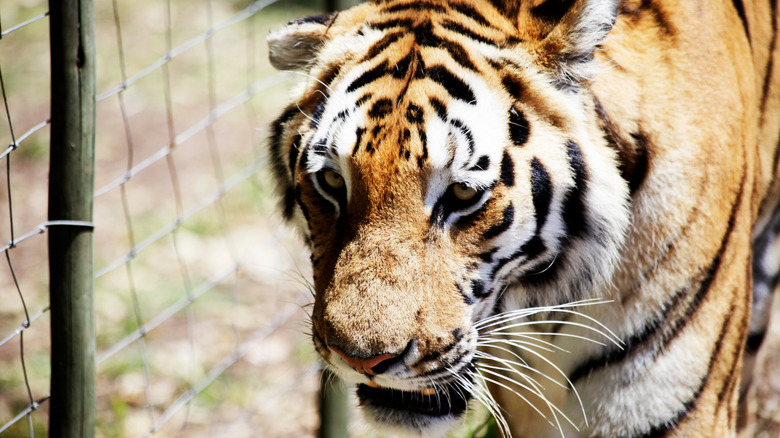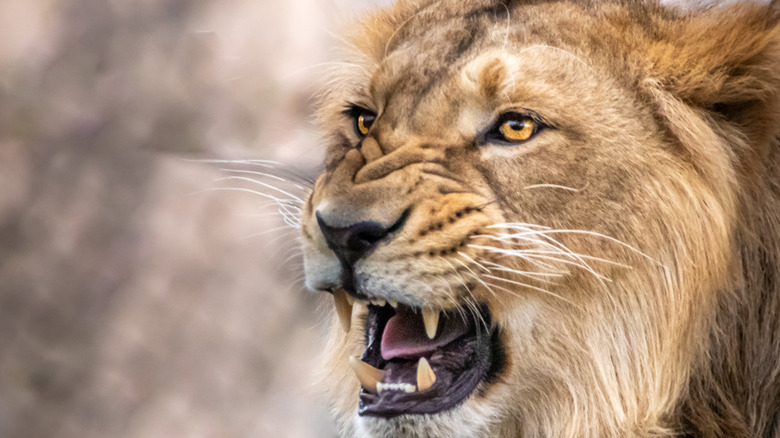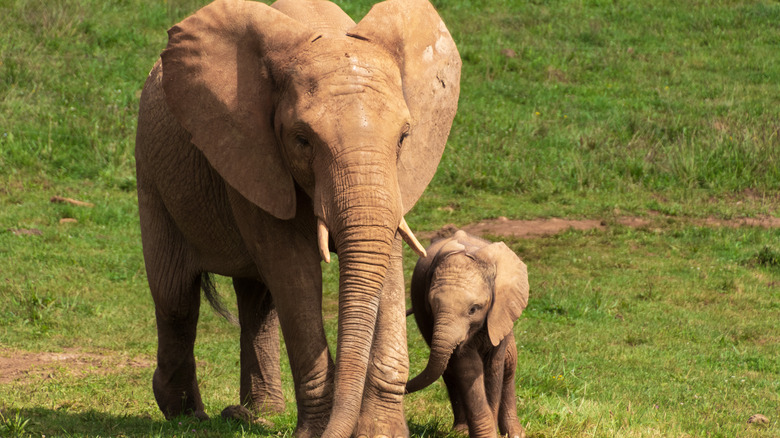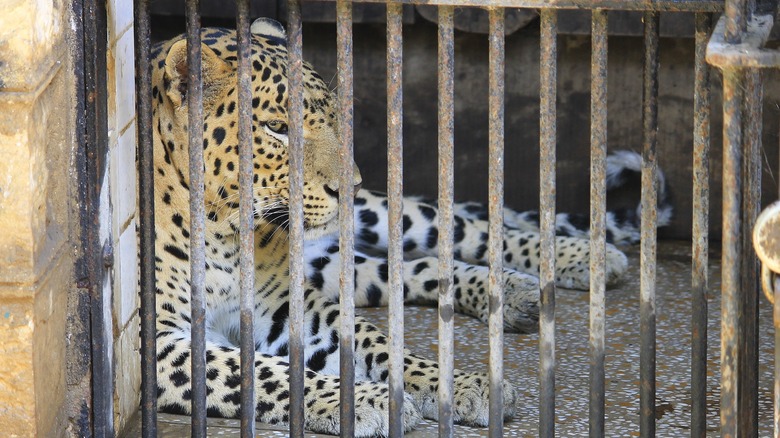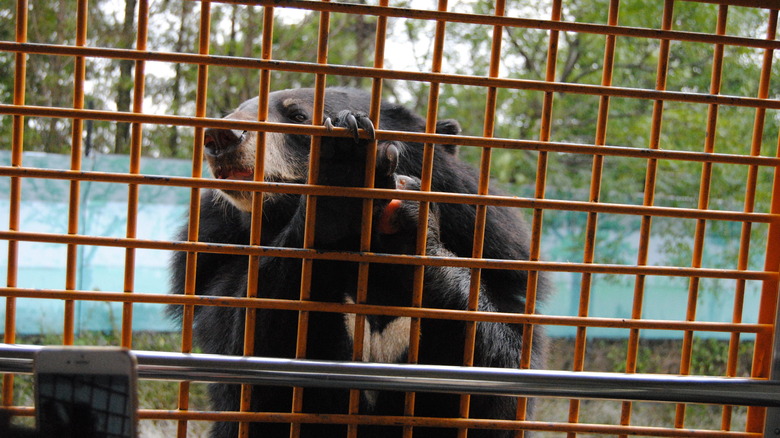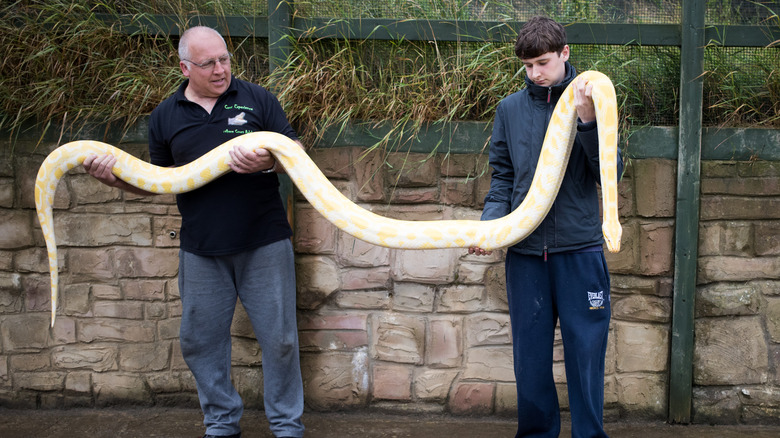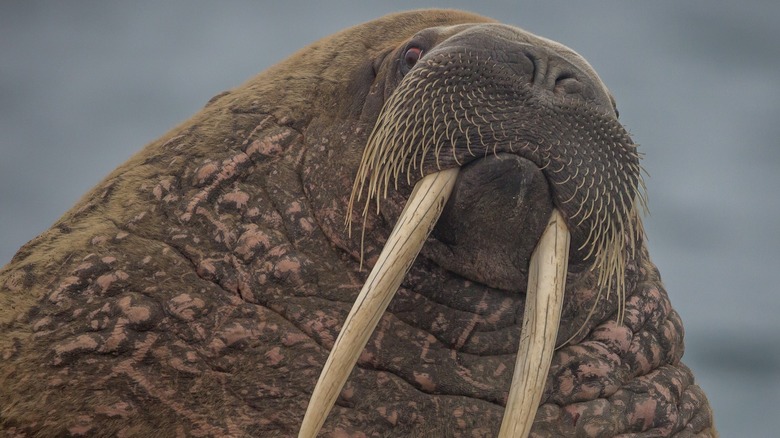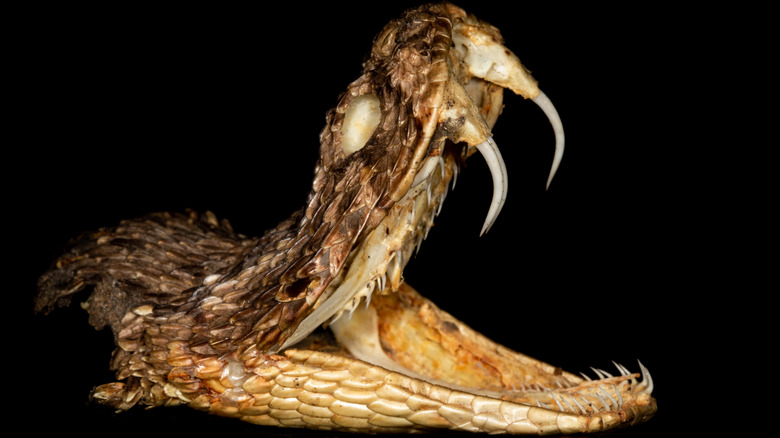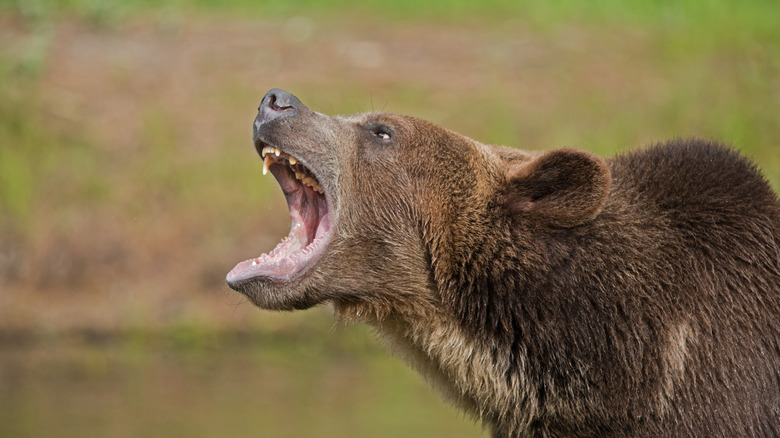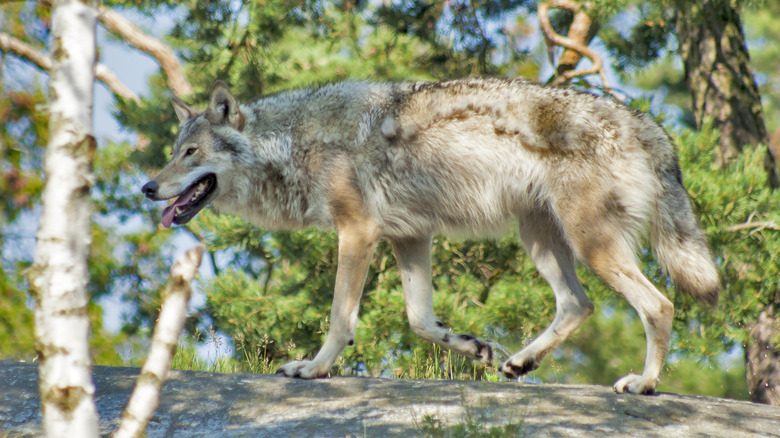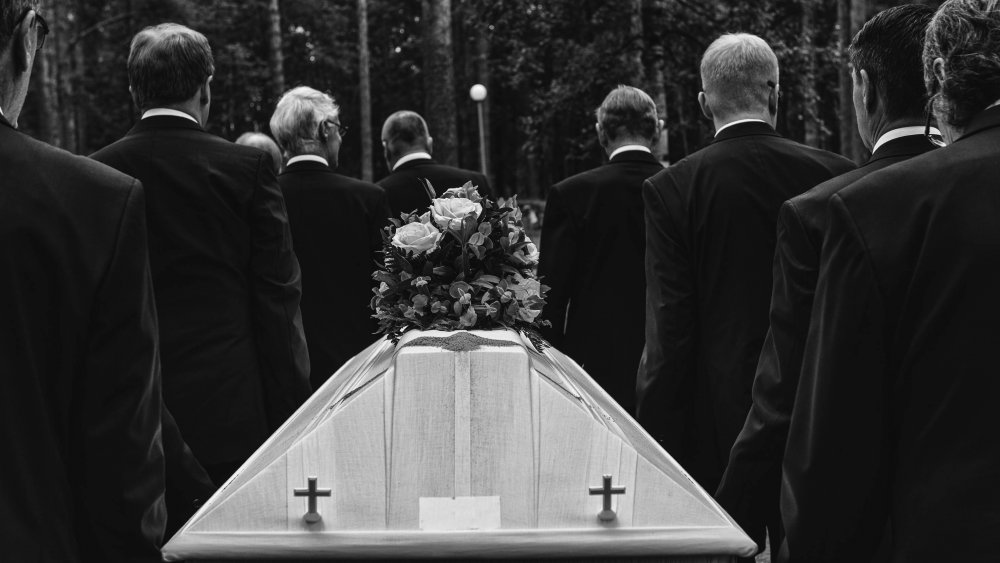
Zookeepers Who Died Tragically On The Job
The world has plenty of dangerous jobs. The Bureau of Labor Statistics cites that the most dangerous (i.e. those with the highest risk of death) include logging, fishing, roofing, and piloting a plane. Zookeeping isn’t listed among the most dangerous jobs, but when things go wrong in a zoo, it is often dramatic, grisly, and even tragic.
When a zookeeper is killed on the job, it is a tragic irony. Zookeepers dedicate their lives to the care, love, and conservation of animals, many of which are endangered species. Such deaths are part of the enduring debate over the ethics of zoos. Are they beneficial, since they serve to educate the public on the need to conserve habitat, or are they cruel and just ways to create spectacles for the masses? Zoos have greatly become more humane over time, with animals usually provided with larger spaces and more natural features than in the past, but captivity still means keeping wild animals in enclosed spaces and out of their natural habitat. This can sometimes lead to deadly consequences for their caregivers. Let’s look at cases of some unfortunate zookeepers who died tragically on the job.
Old school zoo led to grisly amputation and death by polar bear
In the early 20th century and earlier, zoos were usually harsh detention centers for wild animals. They often featured small cages and unnatural settings, which can impact captive animals both physically and psychology, including causing them to act aggressively. One dramatic example is recounted in the State Library of South Australia’s Oral History Collection.
In 1920, the Adelaide Zoo confined brown, sun, and polar bears in small enclosures in hot conditions. The main bear keeper, 65-year-old Samuel May, was marked with facial scars from his job. On February 15, 1920, May entered the polar bear enclosure to clean it. As part of his usual routine, he often sprayed water on the bears in play, since they were bored and needed cooling in the Australian sun. On this day, the routine was broken when one of the polar bears managed to get to the keeper through the bars. According to the Barrier Miner, the polar bear tore off May’s right arm. The zoo director heard the screams and came rushing to the scene. He quickly applied a tourniquet, but May later died in the hospital.
An orca attacked a trainer at SeaWorld
One of the most well known zookeeper deaths is that of Dawn Brancheau. As described by Outside, in 2010 the 40-year old was a trainer of orcas at SeaWorld in Florida. In fact, she was one of the leading faces of the organization, appearing on billboards. On February 24, she was working with Tilikum, a 6-ton, 22-foot male orca, for the Dine with Shamu Show. This show thrilled audiences by having the highly intelligent animals perform tricks, but what most of these excited audience members didn’t realize is that Tilikum had a hard life. Captured as a baby and tormented by the other orcas at SeaWorld, Tilikum was distressed.
After a successful show, Brancheau was lying on a shallow ledge at the edge of the pool, taling to Tilikum and stroking him. The orca took Brancheau’s hair in his mouth and dragged her into the 1.6-million-gallon pool while visitors watched. Sirens blared as staff raced to the scene, and weighted nets were thrown in the water to try to separate the orca from his trainer. Brancheau struggled to get free, but Tilikum rammed her, seized her, and shook her violently. Finally, staff members managed to guide the orca onto a medical lift and raised the floor. They pried the woman out of the whale’s jaws. Her death was recorded as accidental death by drowning and traumatic injuries.
Tilikum had been involved in two marine-park deaths before, but this incident set off a fierce debate about the ethics of capturing and training wild animals for entertainment. The controversy gained international attention through the documentary “Blackfish.” Tilikum died from bacterial pneumonia at SeaWorld in 2017, as reported by Global News.
One Siberian tiger killed a keeper in South Africa
Tigers have been responsible for thousands of human deaths throughout history. The number of attacks have declined in recent years, mostly because tigers are now highly endangered with an estimated population of just 3,500 left in the wild. So when tiger attacks that do occur, it’s usually in a zoo.
One deadly case occurred on June 16, 2021 at the Seaview Predator Park in South Africa. According to news24, wildlife keeper David Siphiwo Solomon, who had worked at the park for around 15 years, was working adjacent to the enclosure of a Siberian tiger named Jasper. The South African reports that workers were repairing the broken electric fence around Jasper’s cage, when the tiger jumped onto the fence and climbed out of his enclosure, in full view of workers and volunteers. Solomon was in the passage between enclosures when Jasper charged him. He tried to escape by climbing a fence, but the tiger seized him, breaking the man’s neck. The tiger then leapt into another enclosure which housed two other Siberian tigers: a male named Judah and a female named Amber. Jasper killed Judah, apparently in an effort to woo Amber.
Visitors who witnessed the incident described the way the park staff handled it as “chaotic,” and the park closed its gates in response. Jasper and Amber were later relocated to a big cat sanctuary.
A zoo intern was mauled to death by a lion
Many young people are attracted to zookeeping as a way to educate the public on conservation and also to satisfy their love of wild creatures. One such person was Alexandra Black, who according to the Indy Star had graduated from Indiana University after studying animal behavior. The 22-year-old woman had undertaken a number of internships, and in 2018 landed another at the Conservators Center in North Carolina. As part of a husbandry team, she was cleaning a lion enclosure with the lion separated from the zookeepers in a holding area. Then, as reported by the News and Observer, a large play ball prevented the separation gate from properly locking. This allowed a 14-year-old male lion named Matthai to get through the barrier, seize Black by the ankle, and pull her in.
Black suffered claw wounds to the shoulders, torso, abdomen, and thigh, but what killed her were deep lacerations to the neck, which broke her spinal cord. ABC News reports that the fire department used hoses to try to separate the lion from the woman. Eventually, the animal was killed with eight rounds of ammo after repeated tranquilizer shots failed to subdue it. The Conservators Center was later fined $3,000 for inadequate safety measures, according to ABC News.
One Spanish zookeeper was clubbed to death by an elephant's trunk
Elephants are often considered the most dangerous animals to keep at a zoo, which is no wonder when you consider the effect of forcing a multi-ton animal into an enclosed space. What also makes elephants dangerous is their intelligence. Health Day News quotes Dr. Keith Hinshaw of the Philadelphia Zoo as saying, “It’s true that an elephant never forgets, and if they don’t like you, they’ll wait for months if necessary, until no one is around. Then they’ll do a headstand on you. Or hold you down and step on your head.”
One recent case of elephant on human violence occurred on February 23, 2021 in Cabarceno Natural Park in Spain. According to a report by CNN, Joaquin Gutiérrez Arnáiz was in the elephant enclosure cleaning and checking on the status of a female elephant’s foot wound. According to People, Gutiérrez Arnáiz was in a corridor where the animals exit the enclosure. Then, without warning, the elephant, who was with her calf, struck the zookeeper with her trunk and slammed him against the bars of the enclosure, killing him.
One Chinese zookeeper was killed while he acted as a substitute
Crocodiles are dangerous animals. In fact, the BBC estimates that about 1,000 deaths per year are caused by crocodile attacks. That is why you might think that when 55-year-old crocodile breeder Yuan Xidi was asked to substitute for the leopard keeper at the Jiufeng Mountain Zoo in Nanping, China, he would be used to working with deadly animals. Sadly, he was not prepared for the experience. According to China Daily/Asia News Network, when Xidi opened the leopard’s cage and entered on on July 19, 2012, the big cat attacked.
Leopards are stealthy hunters and have been known to attack humans to attack humans in the wild. As with all big cats, leopards tend to go for their victim’s neck. This is exactly what happened to Xidi, who died at the scene. The leopard was quieted using anesthetic gum, and the zoo was closed while an investigation took place. The zoo is still operational today.
Visitors watched a zookeeper killed by black bears
The Shanghai Wild Animal Park is a 153-hectare theme park centered on wild animals. It bills itself as a place where visitors can find “exciting adventures and magical experience.”
According to Nikkei Asia, on October 17, 2020, 27-year-old zookeeper Zhang Jinbin was giving a tour of the park in a bus. He was in a zone where bears roamed freely. However, a maintenance worker in an excavator was apparently disrupting the animals. Zhang got out of the bus to speak with the maintenance worker when he was attacked by black bears. Zhang did not have a 2-meter pole, which is standard issue for workers when inside the enclosures. The bears dragged him to a pond and killed him in front of the watching tourists. Videos of the incident circulated the internet, and, as described by the BBC, opened up new debate about whether zoos are ethical.
A python tried to eat a zookeeper
Safety flaws and human errors are often behind deadly zoo accidents. As reported by the BBC, Erick Arrieta was a worker at the Caracas Zoo in Venezuela. In 2008, the 29-year-old was working in the reptile house, when, for unknown reasons, he opened the cage of a Burmese python that had been donated to the zoo two months earlier.
The Burmese python is a powerful predator. As described by National Geographic, these snakes can reach up to 23 feet long, weigh 200 pounds, and can have the diameter of a telephone pole. Purely carnivorous, they hunt prey by biting it, then looping their massive bodies about it, squeezing their victims to death. But of all the large snakes, Burmese pythons are considered to be the most docile and the preferred pet for those who love large snakes.
All the same, a python is still a python, and Arrieta broke safety protocols when he opened the snake’s cage. It is unknown exactly what happened, but Arrieta’s co-workers found the snake in the process of trying to swallow him whole, head-first. They beat the snake off of him, but it was too late — the zookeeper was dead.
One walrus killed two men at a zoo in China
Walruses are one of those animals you might think are rather cute or at least loveably cartoonish creatures who could never harm a human. Think again.
In 2016, a businessman with the last name of Jia was at a zoo in Weihai, China. According to the San Diego Union Tribune, he started to take photos and videos at the walrus pool, including selfies with the female walrus. Notably, there was no barrier between the visitors and the walruses, and while he was taking the selfie, the walrus pulled him into the pool, drowning him.
The walrus keeper, a ten year veteran, witnessed the incident and leapt into the water to rescue the man. However, the walrus also drowned the zookeeper. Some speculated that it wasn’t an act of aggression on the part of the walrus, but rather her desire to play with the humans. The zoo was criticized for its lack of safety barriers. The zoo accepted culpability and offered $137,500 in compensation to the businessman’s family. It is unknown if the zookeeper’s family received remuneration.
A puff adder killed a curator at a zoo in Salt Lake City
Many snakes are highly venomous. This means there are all sorts of safety protocols that must be followed when handling them. However, even wildlife experts are not infallible, and sometimes unpredictible events occur. According to the Deseret News, Jerry de Bary, a curator at the Hogle Zoo in Salt Lake City, had handled dozens of venomous snakes in the past. However, one day he was cleaning a puff adder’s cage and suddenly blacked out. He reportedly tried to break his fall with his left hand when the snake struck.
The University of California notes that puff adder venom claims more lives of people in Africa than any other venomous snake. A single puff adder has enough venom to kill four to five people, and the mortality rate from a bite is over 50%. Unfortunately for de Bary, there was no antivenom available at the zoo. According the New York Times, a team tried to keep him alive through heart massages and a tracheotomy while antivenom was flown in by navy jet from the San Diego Zoo. De Bary seemed to recover, and was even making jokes. However, he needed even more antivenom and that needed to be rushed from Africa. As the serum was being transferred in Rome for a New York-bound plane, de Bary’s blood pressure suddenly dropped, and he died. De Bary’s last words to his physician were “Don’t blame the snake. It was not at fault. It is not an aggressive snake.”
A 19-year-old zookeeper was killed by a brown bear when it decided to tunnel back into its enclosure
According to the BBC, the Orsa Rovdjurspark in Sweden proclaims itself to be Europe’s largest predator park. It features the northern hemisphere’s largest predatory animals, including eagle owls, amur tigers, and brown bears.
According to Men’s Journal, visitors to the park may enter an animal enclosure to observe zookeepers at work up close. Of course, the animals are removed from their enclosures while this happens. On August 4, 2017, an unnamed 19-year-old male zookeeper was preparing the brown bear enclosure for this unique activity when the inhabitant dug his way back in under the fence that separated it within a holding area. When the zookeeper failed to respond to radio calls, two park staff rushed in. One staff member killed the bear with a gun, and gave treatment to the heavily mauled zookeeper.
The injured zookeeper was rushed to a hospital to treat bite wounds, but it was too late. At a news conference, the head of the zoo stated, “First and foremost I want to say that this is a difficult day. I’m thinking about my colleague and his family a lot. It started out as a normal day, a family had booked the activity and normal routines were followed. I’ll leave it to the police to work out what went wrong.”
One zookeeper got mauled to death by wolves despite following safety protocols
Sometimes, even the best laid safety plans go awry. CNN reports that on June 17, 2012, a veteran zookeeper at the Kolmården Wildlife Park in Sweden was working in the wolf enclosure. She had worked with the eight wolves held there since they were pups, and was intended to maintain contact with the animals to keep them socialized. According to Time, the unnamed zookeeper followed safety protocols, and informed a colleague before entering the enclosure. But when she did not report back, staff went to the wolf enclosure to investigate. The zookeeper had been killed and it was difficult to extricate her remains, the staff having to administer sedatives and form a human chain to retrieve the body. A lengthy investigation followed, and the Local reports that the director of the park at the time, Mats Höggren, was found guilty of manslaughter for maintaining unsafe working conditions. He was fined an undisclosed amount, and the park was fined the equivalent of $378,450 dollars.

The Untold Truth Of Prince Diana's Surprising Panorama Interview
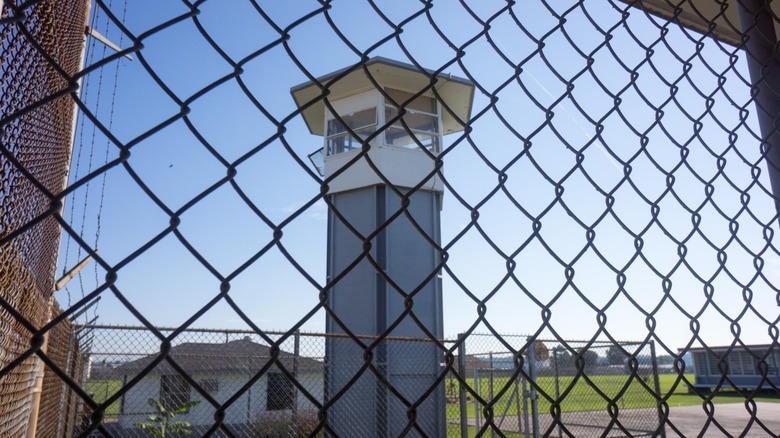
The Truth About Life In A Federal Supermax Prison
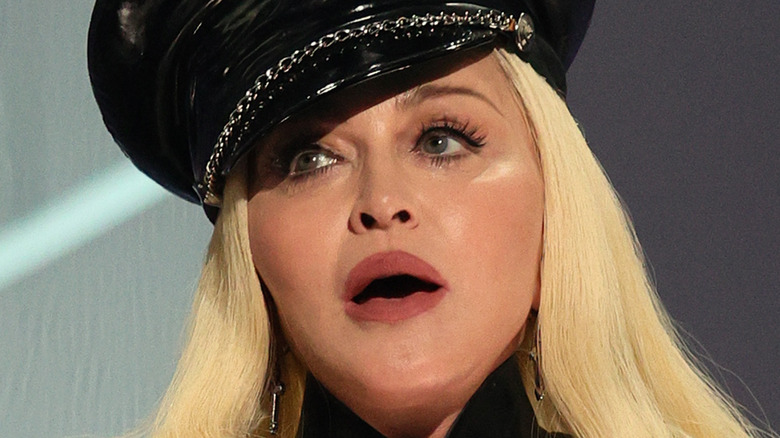
The Real Reason Madonna Doesn't Have A Star On The Hollywood Walk Of Fame

This Is How Richard Nixon Nearly Messed Up The Charles Manson Trial

The Real Human Cost Behind The Building And Maintenance Of Dubai

How Vestal Virgins Had More Power Than Other Roman Women
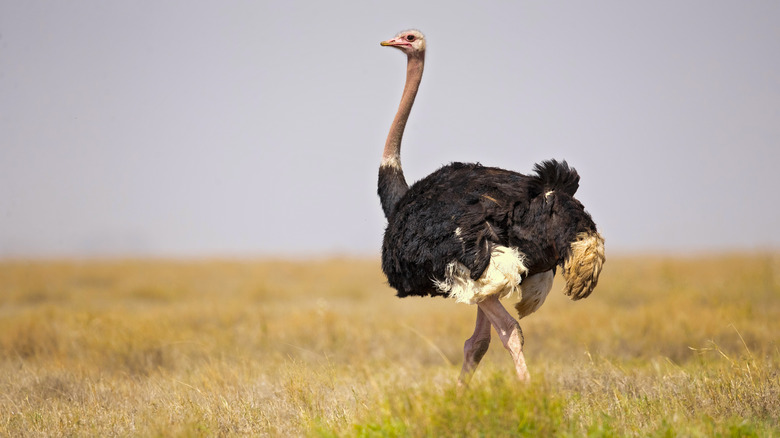
The Myth About Ostriches You Need Stop Believing

The Truth About Baba Vanga, The 'Nostradamus Of The Balkans'

Whatever Happened To Killers Jens Söering And Elizabeth Haysom?

What It's Really Like Living In Siberia
